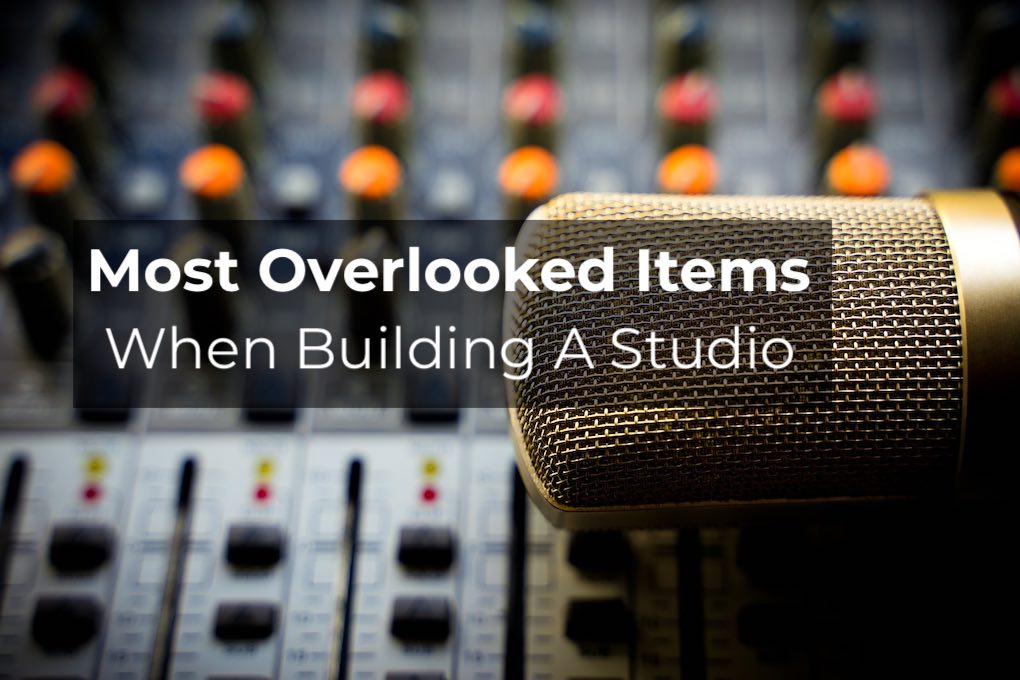- in Acoustics , Book Excerpt , Production , Studios by Bobby Owsinski
The Most Overlooked Items When Building A Studio
It’s inevitable. No matter how many times you’ve built a studio, you have that “Oops, I forgot,” moment at the end. If you’re lucky, it’s something that isn’t major, but a lot of people have been known to do things they’re sorry for later, like close up the walls before installing the electrical or the mic cabling, or sealing the HVAC vents. Then there are some of the larger systems that are important for a functioning studio that are never thought of until the first session. Here are a few overlooked items from my Studio Builder’s Handbook to be aware of before you make that same kind of mistake.

Security
Considering the high cost of all the gear and musical instruments that will be in your studio at any given time, it’s highly recommended that you install a security alarm system from a reputable company along with 24/7 monitoring. There are several very established alarm companies in the country and it pays to get bids from at least two of them before you commit to a system, but don’t sign a long contract if you only plan on being at your location for a couple years.
While it used to be that you needed to have the alarm company run the wiring in the walls, which meant that they needed to do the installation during construction, these days all alarm companies offer wireless systems. As a result, installation is something that can be done at almost any time. Sooner is better than later though, since you don’t want someone walking off with expensive construction tools and materials while you’re in the build stage.
Video
There was a brief moment in time when every part of the studio (including the lounge and iso rooms) had to be wired with coax cable to be video-ready. Being video-ready is still a prerequisite today except that the wiring method is different. Instead of using that low-def coax cable, most rooms are now either wired with Cat-5e or CAT-6 Ethernet cable, or are wireless instead.
CAT-6 is actually great stuff in that it can be used to transmit hi-def video (with an adapter box on either side), digital audio (again with an adaptor box on either side), or plain old wired Ethernet computer to computer communications. It’s not the easiest stuff to wire up, but it’s has very high bandwidth and it’s now one of the main ways of moving both audio and video around the studio.
Wireless
Today, everyone expects wireless internet connectivity in the studio. They just do, so give in and get it. You’ll need it anyway to register and update your DAW software, and it’ll keep your clients very happy that they can connect to the online world with their own computers. It will also give everyone who’s not participating in the session something to do while they wait their turn, which can be invaluable in itself.
Remember to set up a password and firewall on your wireless router so you don’t have the neighborhood stealing your signal. Also be sure to use WPA encryption instead of WEP. WPA is much newer and much more difficult to hack, which might be a significant concern if you’re lucky enough to have celebrity clients.
Backup
Someone once said that the difference between an amateur and a pro is that a pro has a backup, and nothing could be more true. If you don’t back up regularly and often, you’re asking for trouble because no matter how reliable hard drives and SSDs are these days, one will always go down at the most inconvenient time.
Supplies
There are a lot of mundane, day to day items that every personal and commercial studio needs. How about paper towels, toilet paper, soap, coffee, and condiments? Do you have a vacuum cleaner? Do you have garbage cans and trash cans? Do you have cleaning supplies? Do you have plates, silverware, and cups, even if its only paper or plastic ones (someone’s always eating in the studio)? These are things that you don’t think of when during the planning stages of your studio, but they’re very important in the day-to-day operation in that having these items keeps the session running smoothly. It’s easy to waste 15 minutes just looking for something to eat off of or drink out of.
Other frequently forgotten items include music stands, folding chairs, and maybe a couple tall bar stools. People have to be comfortable if they’re going to spend long hours in your studio. Do you have enough mic stands, headphones, mic cables, and all the other things that you’ll need to run your session? How about pencils, pens, Sharpies, and notepaper? What about a broom and a dustpan or a mop, something to clean a toilet with, and a toilet plunger? How about extra light bulbs, vacuum cleaner bags, air freshener, and A/C extension cords? The time to get them is now before you need them.
Storage
One thing that’s guaranteed to happen over the years is that you will begin to accumulate more, for want of a better word, “stuff.” This will happen whether you like it or not. That’s why adequate storage is essential. You’re going to buy new gear and need a place to store the old until you can figure out what to do with it (which may be never). Then there’s the amplifier that a client left and never picked up. How about the studio drum kit that you bought but never planned on having? How about a place for all the studio supplies we just talked about? Before you know it, whatever space you allotted is used up.”
These are just a few of most overlooked, and important, forgotten items when building a studio.
You can read more from The Studio Builder’s Handbook and my other books on the excerpt section of bobbyowsinski.com.

